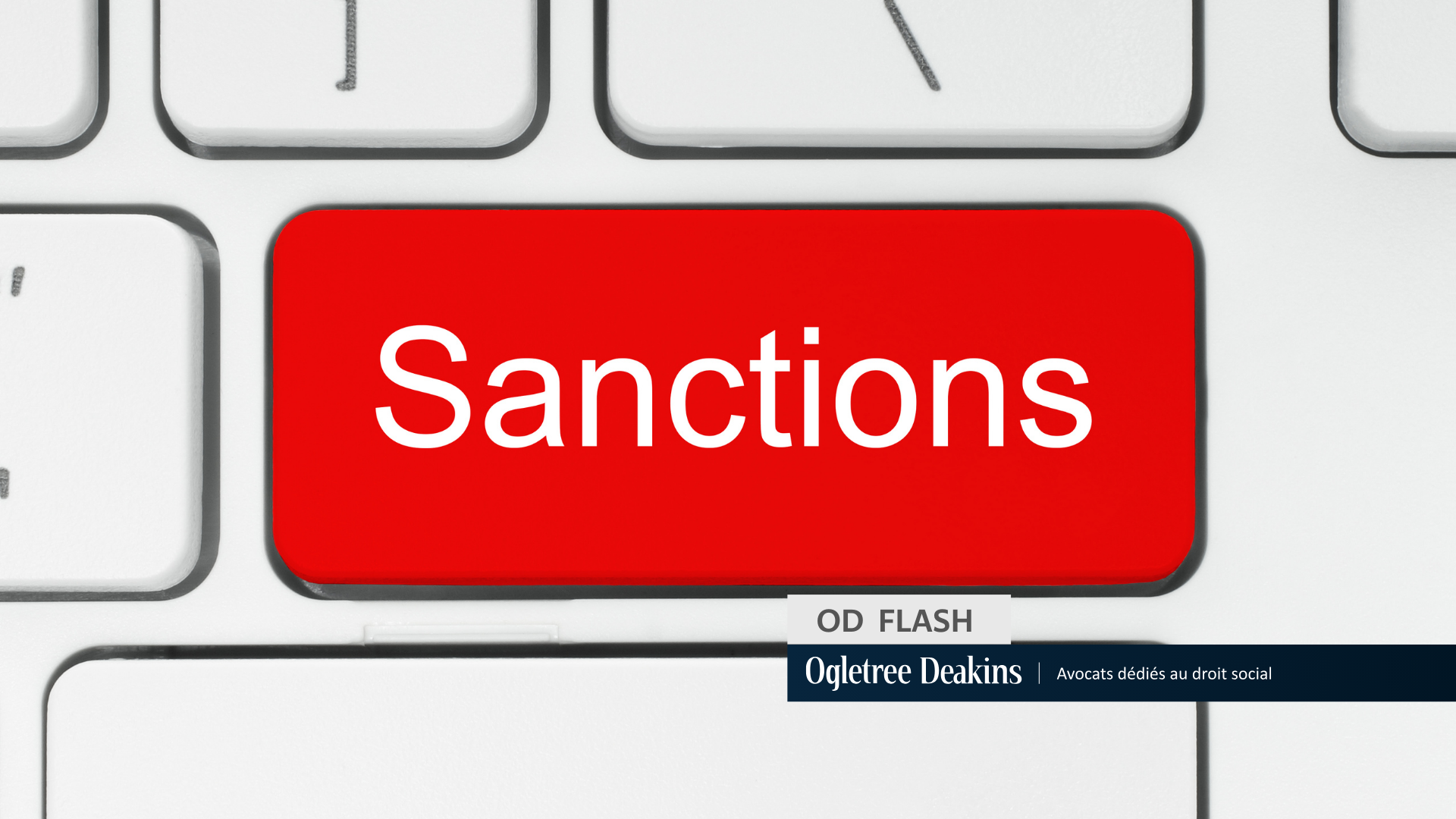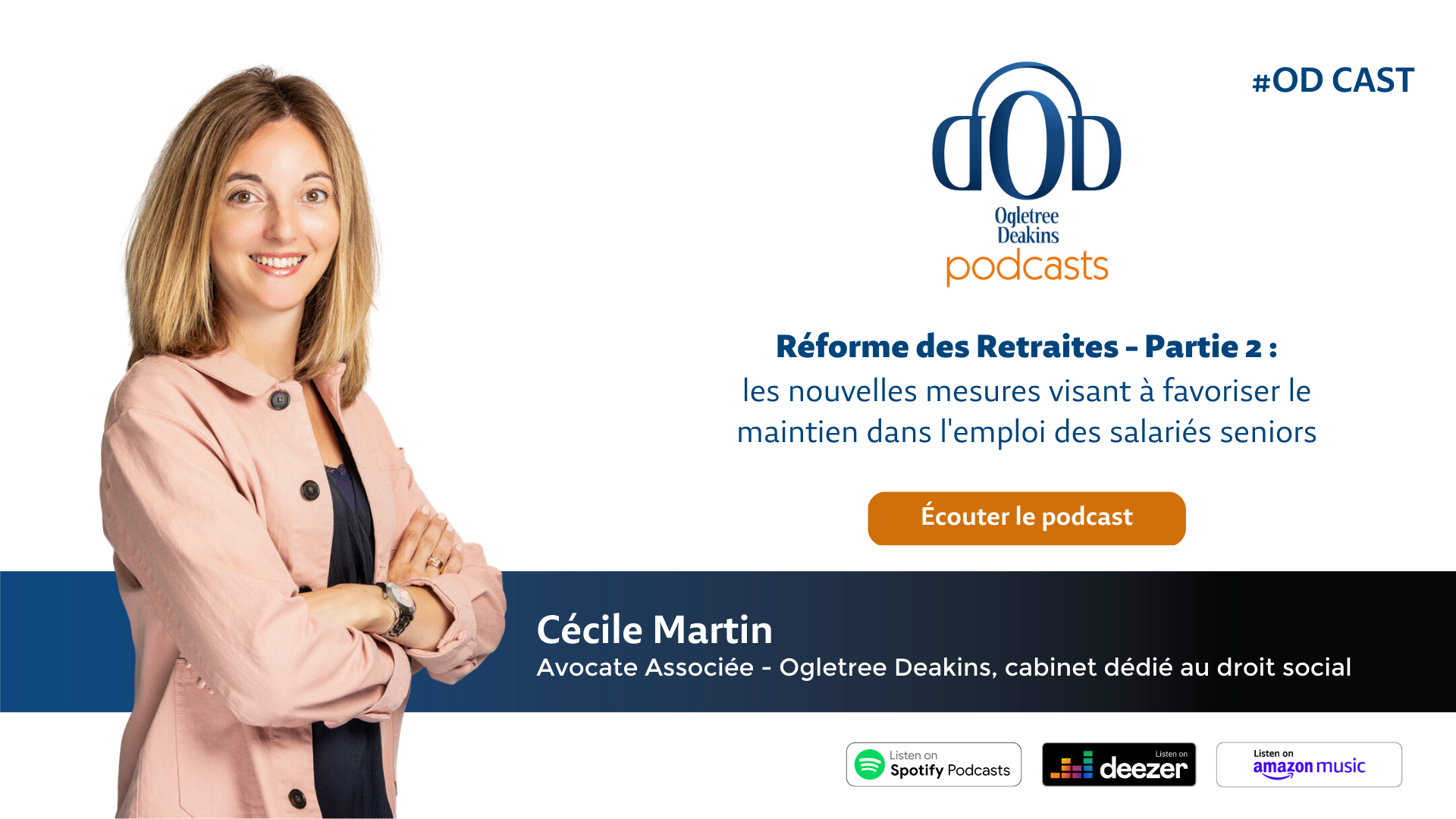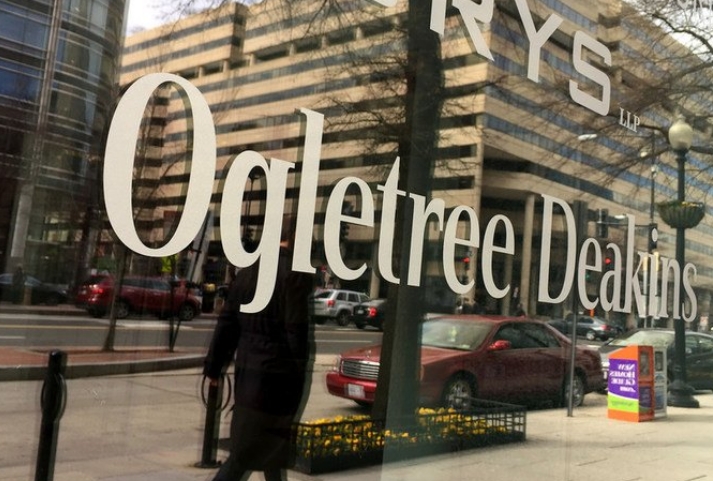
TEST widget
- test widget
- test widget
- test widget
test citation
exemple citation
accordion case test widget

Card Title
Card text goes here. This may detail a concept or refer to linked content. Add a link to view the Call to Action below this text.

Card Title


Card Title
Card text goes here. This may detail a concept or refer to linked content. Add a link to view the Call to Action below this text.
Card text goes here. This may detail a concept or refer to linked content. Add a link to view the Call to Action below this text.

First Card
Card text goes here. This may detail a concept or refer to linked content. Add a link to view the Call to Action below this text.

Second Card
Card text goes here. This may detail a concept or refer to linked content. Add a link to view the Call to Action below this text.

Third Card
Card text goes here. This may detail a concept or refer to linked content. Add a link to view the Call to Action below this text.

First Card
Card text goes here. This may detail a concept or refer to linked content. Add a link to view the Call to Action below this text.

Second Card
Card text goes here. This may detail a concept or refer to linked content. Add a link to view the Call to Action below this text.

Third Card
Card text goes here. This may detail a concept or refer to linked content. Add a link to view the Call to Action below this text.

Client Portal
Client Portal
Looking to manage your compliance efforts, get a multi-jurisdictional view of up-to-date employment laws, build an employee handbook, have practical legal templates at your fingertips, and save time?
The Ogletree Deakins Client Portal is our new platform designed to ensure you stay current on employment and compliance matters.
Get real-time updates on complex and changing laws, current benchmarking data, interactive data visuals, and hundreds of customizable templates on the Ogletree Deakins Client Portal. Log in from any device and tailor it to your needs. For more information, attend a 30-minute demo or reach out to clientportal@ogletree.com.
Life at Ogletree


Life at Ogletree
Key Team Members

Tim Fox

Kegan Reiswig
Diversity, Equity, and Inclusion

Diversity, Equity, and Inclusion
Companies Gauge Impact of Return to Office

Quick Hits
- Remote work and hybrid work remain a growing trend.
- Some employers, including federal agencies, have implemented return-to-work policies during the last two years.
- Employers with a return-to-work policy may want to measure its ongoing impact on employee retention, recruitment, and productivity.
In many industries, remote and hybrid work increased dramatically during the coronavirus pandemic in 2020 and 2021. After the pandemic subsided, some employers announced new policies requiring all workers to return to the office four or five days per week. On January 20, 2025, President Donald Trump issued an executive order requiring federal agencies to end remote work and order federal employees to be present in the office five days per week.
Some employers and managers hoped a return to the office would increase productivity, strengthen the corporate culture, and promote collaboration and innovation. Did the return-to-work policy bring the intended results, or did it have unintended consequences for employers and employees?
A 2023 survey from Unispace found that 42 percent of employers that mandated a return to the office experienced higher than normal turnover, and 29 percent had a harder time recruiting employees. Productivity increased at workplaces where the use of remote work increased, even before the pandemic, according to a 2024 study from the U.S. Bureau of Labor Statistics. About 31 percent of U.S. employees were engaged at work in 2024, up from 26 percent in 2000, according to a Gallup survey.
Many employees like remote work because it eliminates their commuting time and costs, like gas and parking. The time that would have been spent commuting can be spent on work-related tasks. Remote work also gives employees greater flexibility and time to handle personal and family matters, like medical appointments and school meetings.
For employers, remote work may increase employee retention and widen the talent pool for hiring. It also may lower spending on office space, utilities, commuter benefits, and office supplies. Likewise, it may lower payroll costs because some workers will accept a lower salary for a remote position that offers better work-life balance.
Common Legal Issues With Remote and Return-to-Office Work
Americans with Disabilities Act (ADA) Accommodation Challenges: Employers face potential disability discrimination claims when mandating office returns for employees with qualifying disabilities who request remote work as a reasonable accommodation. Failure to engage in the interactive process before applying return-to-work policies to employees with disabilities can create legal liability.
Discrimination Concerns: As with most other employment decisions, selectively applied return-to-office mandates might create a perception of favoritism or unfairness, potentially creating discrimination claims based on race, gender, age, disability, and other protected characteristics.
Compensation Equity Issues: Different pay structures for remote versus in-office employees, or employees working in diverse geographic regions, may create pay equity complications or discrimination claims.
Pay Transparency Compliance Issues: An increasingly complex web of state and local pay transparency laws mandate disclosure of salary ranges in job postings or by request from current employees. Some laws require disclosure in the jurisdiction if the job could be filled by a remote worker or if the worker will perform work at a location in the jurisdiction. Complying with these laws in the context of hybrid or remote work requires careful planning.
Productivity Measurement Liability: Methods used to monitor remote versus in-office productivity could create privacy or discrimination issues if not applied consistently.
Travel Time and Expense Reimbursement: A hybrid work arrangement can give rise to complexities regarding travel time for nonexempt employees, particularly where there may be ambiguity regarding whether travel counts as commuting time or on-the-clock travel time. Moreover, in some states where expense reimbursement is required for use of personal devices, internet service, and the like, ambiguities may arise with hybrid schedules allowing employees to work remotely on a flexible schedule.
Next Steps
Employers may wish to measure the impact of return-to-work policies on productivity, recruiting, retention, payroll, and other overhead costs. This can be accomplished with employee engagement surveys, accounting software, and gathering data on cost per hire, time to hire, and turnover rates in various corporate departments and locations.
Among other compliance steps, employers may want to consider:
- Developing and consistently following written standards regarding remote, hybrid, or in-office work location obligations.
- Implementing a consistent, documented interactive process for employees requesting remote work accommodations.
- Reviewing compensation practices and conducting pay equity audits.
- Mapping out pay transparency laws and complying with state and local mandates.
- Developing clear metrics to measure productivity, regardless of work location.
- Reviewing policies to ensure they don’t create unintended discriminatory impacts.
- Creating clear guidelines about reimbursable remote work expenses.
Ogletree Deakins will continue to monitor developments and will provide updates on the Return to Work blog as new information becomes available.
This article and more information on how the Trump administration’s actions impact employers can be found on Ogletree Deakins’ New Administration Resource Hub.
Christopher W. Olmsted is a shareholder in Ogletree Deakins’ San Diego office.
This article was co-authored by Leah J. Shepherd, who is a writer in Ogletree Deakins’ Washington, D.C., office.
Follow and Subscribe
Oregon Court of Appeals Holds That Handbooks Can Form Contracts Unless Clearly Disclaimed

Quicks Hits
- In Dailey v. University of Portland, the Court of Appeals of the State of Oregon addressed the enforceability of handbook provisions as a “contract.”
- Generally, Oregon law recognizes that handbook provisions can form a contract unless effectively disclaimed.
- The court emphasized that employers must ensure disclaimers are clear, prominently placed.
Background
Stephen Dailey was a student in the University of Portland’s doctoral nursing program. He began the nursing program in 2015. However, in 2017, due to personal circumstances, he reduced his course load. The following year, in 2018, he took a leave of absence and did not return until three years later, at which point he reenrolled in the program. To earn his degree, Dailey was required to complete a specific sequence of academic and clinical courses within a six-year period.
According to the university’s intranet bulletin, nursing students’ clinical courses must have a supervisor with a minimum of 2,080 hours of licensed experience. For two semesters, Dailey’s clinical supervisors did not meet this requirement, as neither had the necessary licensed experience.
Dailey was ultimately unable to complete the program within the permitted six-year timeframe and withdrew. Dailey brought a breach of contracts claim against the university, arguing that disclaimers in its general student handbook, nursing school handbook, and online bulletin were ambiguous and gave rise to contractual obligations for the university to find clinical opportunities for Dailey.
The Court’s Decision
The appeals court agreed with the university that clear and conspicuous disclaimers can prevent handbook provisions from forming a contract. The court, however, found that while the general student and nursing school handbook’s disclaimers were clear and conspicuous, the university’s disclaimer on its bulletin was “tucked away in a mousehole.” To access the bulletin’s disclaimer, a reader had to click through two separate webpages without any clear indication that a disclaimer would be found there. The court noted that the university’s disclaimer was therefore effectively hidden. The court held that, as a matter of law, the disclaimer was not conspicuous enough to defeat the plaintiff’s contract claim and reversed the trial court’s grant of summary judgment.
Key Takeaways for Employers
- Although the case involved a student rather than an employee, the law applies equally in the employment context.
- Employers may consider placing clear and conspicuous disclaimers in their employee handbooks, personnel policies, and intranet-based policies to ensure that such documents do not inadvertently become enforceable employment contracts.
Ogletree Deakins’ Portland (OR) office will continue to monitor developments and will post updates on the Oregon blog as additional information becomes available.
Follow and Subscribe
LinkedIn | Instagram | Webinars | Podcasts
Employer Health Plans Must Report Number of Covered Children in New Mexico

Quick Hits
- New Mexico’s Vaccine Purchasing Act requires employers that sponsor plans and health insurers to report the total number of children covered during the past year.
- The purpose of the reporting is to help the state determine the quantity of vaccines to purchase.
- The deadline to report the information is July 1, 2025.
Employers and health insurers must report to the New Mexico Office of the Superintendent of Insurance the total number of children in New Mexico who were enrolled in the plan during any part of the previous year and were under the age of nineteen as of the previous December 31. Not included are any children who are not residents of New Mexico, children who are members of a Native American tribe, and children who are enrolled in Medicaid or another medical assistance program administered by the state.
Each year, the state will estimate the amount of money needed to purchase, store, and distribute vaccines to all insured children in the state, including a reserve of 10 percent of the amount estimated.
Ogletree Deakins will continue to monitor developments and will provide updates on the Employee Benefits and Executive Compensation, Healthcare, and New Mexico blogs as new information becomes available.
Timothy J. Stanton is a shareholder in Ogletree Deakins’ Chicago office.
Stephanie A. Smithey is a shareholder in Ogletree Deakins’ Indianapolis office.
This article was co-authored by Leah J. Shepherd, who is a writer in Ogletree Deakins’ Washington, D.C., office.
Follow and Subscribe
LinkedIn | Instagram | Webinars | Podcasts
It Is Not Always Sunny in Philadelphia for Employers—Meet the POWER Act

Quick Hits
- On May 27, 2025, Philadelphia Mayor Cherelle L. Parker signed the “Protect Our Workers, Enforce Rights (POWER) Act” into law, which strengthens worker protections and enforcement mechanisms in the city.
- The POWER Act empowers the Philadelphia Department of Labor’s Office of Worker Protections to conduct independent investigations, maintain a “Bad Actors Database,” and revoke business licenses for noncompliant employers.
- The POWER Act includes provisions for retaliation protections, immigrant worker support, increased sick pay for tipped employees, extended recordkeeping requirements, and allows workers to file civil actions for violations without exhausting administrative remedies.
Significant measures in the POWER Act include:
- Strengthening Philadelphia’s Department of Labor. The act provides the Philadelphia Department of Labor’s Office of Worker Protections (OWP) with the ability for more thorough workplace investigations and to hold employers accountable under already existing local labor laws, including the wage theft ordinance, paid sick leave ordinance, and Domestic Worker Bill of Rights. This includes the authority to initiate investigations independently (without any formal complaints), broaden the scope of investigations unilaterally, and subpoena records and testimony.
The OWP will also maintain a publicly accessible “Bad Actors Database,” consisting of employers with three or more infractions from separate incidents or circumstances who have failed to comply with ordered remedies in a timely manner. Of note, the Act further empowers the OWP to revoke business licenses and city procurement contracts from employers listed on the “Bad Actors Database.”
- Retaliation Protections. The act reaffirms that employers are strictly prohibited from retaliating against employees for exercising their rights under its provisions—such as filing complaints, taking sick leave, or participating in investigations. Critically, the act presumes unlawful retaliation whenever an employee faces an adverse employment action within ninety days of filing a complaint with the OWP, informs any person about an employer’s alleged violation of the act, cooperates with an investigation or prosecution of an alleged violation, or opposes any policy, practice, or act made unlawful by the act. The burden, therefore, lies with the employer to prove that retaliation did not occur. Employers must demonstrate nonretaliatory intent by clear and convincing evidence, a higher legal burden.
- Immigrant Worker Protections. The act creates clear guidelines for the OWP to certify and submit statements of interest on behalf of immigrant workers who may be eligible for a U Visa or T Visa under the Victims of Trafficking and Violence Protection Act (2000), or for the Deferred Action Program under 6 U.S.C. § 202(5) and 8 U.S.C. § 1103.
- Sick Pay for Tipped Employees. The act raises the hourly rate for paid sick leave for tipped workers under the Philadelphia paid sick leave ordinance. The hourly rate for paid sick time is calculated by taking the numerical average of the hourly wage for “Bartenders,” “Waiters & Waitresses,” and “Dining Room & Cafeteria Attendants & Bartenders Helpers,” as defined under the Standard Occupational Classification, published by the Pennsylvania Department of Labor.
- Notice to Employees. The act requires employers to notify all employees of their rights. To provide slight relief for employers, however, the act removes the requirement that notices of rights be included in handbooks distributed to employees.
- Recordkeeping. The act extends the duration that employers must keep required records from two years to three years. Employers must maintain records of (a) hours worked by an employee, including dates; and (b) hours of sick time taken by an employee and payments made to an employee for the sick time.
- Private Right of Action. A worker who believes he or she has been harmed by a violation of the act may file a civil action in court without first exhausting administrative remedies. The person who allegedly violated the act, however, must be given written notice of the alleged violation and afforded fifteen days to cure the harm. The statute of limitations for bringing such an action is three years from the date the employee knew or should have known of the alleged violation, subject to the exceptions under Section 9-6602(6) and Section 9-6607(5).
Key Takeaways
The POWER Act introduces enhanced mechanisms to enforce compliance with Philadelphia’s existing employment and labor protection laws. Employers may want to:
- monitor the Philadelphia Department of Labor webpage and familiarize themselves with the POWER Act’s requirements;
- provide employees with a notice of their rights under the act, though this notice does not need to be included as a formal amendment to the employee handbook; and
- review their recordkeeping protocols and practices and update their systems to ensure all required records are retained for at least three years.
In addition, employers may wish to educate supervisors and managers about the impact of disciplinary actions issued after complaints or protected activities.
Ogletree Deakins’ Philadelphia office will continue to monitor developments and provide updates on the Leaves of Absence, Pennsylvania, and Wage and Hour blogs as additional information becomes available.
Follow and Subscribe
LinkedIn | Instagram | Webinars | Podcasts
SJC Confirms Nonsolicitation Agreements Are Excluded by Scope of Massachusetts Noncompetition Agreement Act

Quick Hits
- In 2018, the Massachusetts Noncompetition Agreement Act (MNAA), effective prospectively only for agreements entered into on or after October 1, 2018, was enacted.
- The Massachusetts Supreme Judicial Court affirmatively held that nonsolicitation agreements are not subject to the MNAA.
- The parties’ dispute centered on whether a nonsolicitation agreement, although expressly excluded from the statutory definition of a “noncompetition agreement,” may nevertheless constitute a “forfeiture for competition agreement” within the meaning of the MNAA when the violation of the nonsolicitation agreement triggers a forfeiture clause.
- The SJC held that just because a nonsolicitation agreement is coupled with a forfeiture provision does not change the fact that nonsolicitation provisions are excluded from the MNAA.
Factual Summary
In 2017, Foundation Medicine, Inc. (FMI) hired Susan Miele. Miele signed a restrictive covenant agreement as a condition of her employment, which included a noncompetition, nonsolicitation, and confidentiality and assignment provisions. The nonsolicitation provision barred Miele, both during her employment and for one year after the end of her employment, from directly or indirectly soliciting any employees or consultants of FMI to leave FMI or facilitate their hire by her subsequent employer.
In 2020, Miele and FMI executed a transition agreement in connection with her separation from the company, and that transition agreement expressly incorporated the restrictive covenant provisions that Miele had signed upon her hire by FMI. The transition agreement included a forfeiture provision that provided that if Miele committed a breach of any agreement with FMI, Miele would forfeit any unpaid benefits under the transition agreement and would have to immediately repay any previously paid benefits. FMI ultimately paid Miele over $1 million in transition benefits.
In 2021, after Miele left her employment with FMI, she joined Gingko Bioworks. FMI alleges that during the one-year period after she left FMI, Miele recruited several FMI employees to work at Gingko. FMI then notified Miele that she had breached her transition agreement, and that pursuant to the forfeiture clause in that agreement, FMI ceased further payments to Miele and demanded that she repay all benefits already disbursed. Miele did not comply with that demand.
Procedural History and the Parties’ Arguments
Miele sued FMI in late 2021, alleging that FMI breached the transition agreement by withholding her transition benefits. FMI counter-claimed for breach of contract, stating that Miele violated both her transition agreement and her restrictive covenant agreement, and asked the court for judgment declaring it did not need to pay Miele any additional benefits under the transition agreement.
Miele moved for judgment on the pleadings, arguing that while the MNAA did not expressly apply to nonsolicitation agreements, it should apply here because the inclusion of the forfeiture clause made the non-solicitation agreement subject to the Massachussetts noncompetition agreement. FMI argued in response that the MNAA did not apply here, noting that it only governs “noncompetition agreements” and expressly excludes non-solicitation agreements.
The lower court granted Miele’s motion in part, arguing that FMI could not enforce the forfeiture provision of the transition agreement, but also holding that FMI could still assert Miele’s breach of the restrictive covenant agreement as a defense to her breach of contract claim or from seeking damages for that alleged breach. In its holding, the lower court rejected FMI’s position that all non-solicitation agreements fall outside of the noncompetition act, and instead held that nonsolicitation agreements are only excluded if they do not impose a forfeiture provision for breach of the agreement.
FMI moved for an interlocutory ruling to the appeals court, and the SJC then allowed FMI’s application for direct appellate review.
The SJC’s Holding
The SJC framed the parties’ dispute as follows: whether a nonsolicitation agreement, although expressly excluded from the statutory definition of a “noncompetition agreement,” may nevertheless constitute a “forfeiture for competition agreement” within the meaning of the Massachusetts Noncompetition Agreement Act when the violation of the nonsolicitation agreement triggers a forfeiture clause.
In reaching its holding, the SJC looked to legislative history and the plain language of the Massachusetts Noncompetition Agreement Act, noting that noncompetition agreements do not include nonsolicitation agreements, and forfeiture for competition agreements are a subset of noncompetition agreements. The court found that it then necessarily followed that forfeiture for competition agreements also exclude nonsolicitation agreements, and that to conclude otherwise would contradict the statute’s express exclusion of nonsolicitation agreements from the broader category of noncompetition agreements.
The SJC found that the inclusion of a forfeiture clause in Miele’s transition agreement did not alter this analysis, reasoning that there was no justification for treating a nonsolicitation agreement differently simply because it includes a forfeiture provision. In support of its decision, the SJC pointed out that the critical flaw in Miele’s position was that her reading of the statute would expand the scope of forfeiture for competition agreements to include nonsolicitation provisions even though the statute clearly excluded them from the definition of noncompetition agreements. The SJC further explained that “solicitation cannot be reintroduced through a back door without rendering the statute internally contradictory.”
The SJC remanded the matter to the lower court with instructions to reverse the order partially granting Miele’s motion for judgment on the pleadings.
Key Takeaways
This decision clarifies the scope of the MNAA and provides further guidance to employers regarding remedies they can pursue or enforce for potential breaches of nonsolicitation agreements. Employers may want to review their current agreements to consider the implications of the Miele decision for their existing or future agreements.
Ogletree Deakins’ Boston office and Unfair Competition and Trade Secrets Practice Group will continue to monitor developments and will provide updates on the Massachusetts and Unfair Competition and Trade Secrets blogs as additional information becomes available.
Follow and Subscribe
LinkedIn | Instagram | Webinars | Podcasts
Student Visa Pause Lifted; Social Media Will Be Screened

Quick Hits
- The U.S. State Department has lifted the temporary pause on scheduling new student visa interviews for F, M, and J visas and is now requiring consular officers to screen applicants’ social media and online presences.
- Enhanced vetting procedures for student visa applicants, including detailed social media scrutiny, are expected to increase processing delays and refusals, impacting international students’ plans to study or train in the United States.
Analysis and Impact
The screening process involves checking for any signs of hostility “towards the citizens, culture, government, institutions, or founding principles of the United States.” Additionally, officers will vet for support of terrorism, antisemitic harassment, violence, or militant groups. This scrutiny is part of the Trump administration’s broader efforts to address stated security concerns with universities that enroll foreign national students.
Consular officers are instructed to flag applicants with a history of political activism and to consider the likelihood of such activities continuing in the United States. Consulates will take detailed case notes and screenshots of online content. The screening applies to both new and returning student visa applicants and includes a broad definition of “online presence,” encompassing social media and online databases.
While the factors identified do not automatically disqualify applicants, they trigger further review to ensure compliance with U.S. immigration admissibility laws. The cable also directs embassies to prioritize interviewing physicians applying for a J-1 visa for medical residency and educational exchange, and students enrolled at universities where international students constitute 15 percent or fewer of the total student population.
University and Employer Impacts
Although the recent State Department cable lifts the Trump administration’s pause on visa interviews for F, M, and J visa applicants, the heightened vetting procedures, particularly enhanced scrutiny of applicants’ social media histories, are likely to increase visa processing delays and refusals. International students planning to enter the United States for academic study or work-based training can expect:
- Longer processing times due to expanded vetting and limited appointment availability, especially as demand grows over the summer ahead of the fall academic term.
- Consular backlogs and capacity constraints that may further slow visa issuance.
- Additional documentation requirements, including:
- usernames for social media platforms;
- detailed biographic and travel histories; and
- sensitive personal information covering the last five years.
- Greater risk of delays or denial, as adjudications may hinge on subjective interpretations of social media content and other discretionary factors.
Ogletree Deakins’ Immigration Practice Group will continue to monitor developments and provide updates on the Immigration blog as additional information becomes available.
This article and more information on how the Trump administration’s actions impact employers can be found on Ogletree Deakins’ New Administration Resource Hub.
Follow and Subscribe
LinkedIn | Instagram | Webinars | Podcasts
Best Practices When Taking Voluntary Compliance Steps Using Workforce Analytics

Quick Hits
- The Trump administration has sought to end both federal enforcement of antidiscrimination laws based on disparate impact theories and to eliminate employer DEI programs.
- Even with these shifting priorities, it remains critically important for employers to collect and study applicant and employee demographic data to maintain compliance with equal opportunity and antidiscrimination laws, as well as to be prepared for scrutiny under the Trump administration’s shifting policies.
- Employers may want to consider proactive collection and analysis of workforce demographic data, barrier analyses, and enhanced training programs to ensure compliance with equal employment opportunity and antidiscrimination laws.
The administration—largely through the issuance of executive orders (EO)—has prioritized merit-based opportunity, sought to end usage of disparate impact theories of discrimination, rescinded federal contractor obligations to provide affirmative action and discrimination protections for women and minorities, sought to eliminate “illegal” diversity, equity, and inclusion (DEI) initiatives, and focused on stopping anti-American and anti-Christian bias and combating antisemitism. The Equal Employment Opportunity Commission (EEOC), the U.S. Department of Labor (DOL), and the U.S. Department of Justice (DOJ) have all taken actions to advance the Trump administration’s policy objectives, but questions remain.
In particular, the Trump administration’s focus on discouraging the collection of applicant data related to race, ethnicity, and sex, coupled with its messaging on unlawful race and sex discrimination in DEI programs, has many employers hesitant to collect, maintain, and analyze demographic information from their applicants and employees.
This legal landscape is especially confusing for federal contractors given the wind down of EO 11246 obligations, but the administration’s new focus impacts all employers. As a result, employers face challenges complying with legal obligations and effectively managing risks associated with workplace discrimination and harassment.
However, a close review of the EEOC’s Fiscal Year 2026 Congressional Budget Justification submitted to Congress in May 2025 reveals that EEOC investigations will continue to focus on employer data. According to the budget justification, the EEOC is committed to educating and informing its own staff to “combat systemic harassment, eliminate barriers in hiring and recruitment, recognize potential patterns of discrimination, and examine and analyze these often large or complex investigations effectively.” The agency said that in fiscal year (FY) FY2026, it plans to “conduct mid and advanced level training for field staff and assist with the development of class investigations, data requests, and data analysis for pattern and practice disparate treatment cases.” (emphasis added).
The EEOC’s characterization of budget funds sought for its litigation program is also instructive. As of March 31, 2025, 46 percent of the EEOC’s litigation docket involved systemic discrimination or class lawsuits. Citing efforts to enforce EO 14173, the Commission contemplates involving “expert witnesses” and “the discovery of large-scale selection data to prove the existence and extent of a pattern or practice of discrimination.” The Commission justifies its resource request “to remedy discrimination on prioritized issues,” and argues aggressive enforcement will result in “a strong incentive for voluntary compliance” by employers.
Shifting Enforcement Targets
Employers may see an increase in EEOC charges from charging parties and Commissioner’s as well as other enforcement activities that align with the current administration’s priorities, including enforcement regarding DEI programs, so-called anti-American bias, national origin discrimination, and anti-Semitism. As just one example, the EEOC recently settled a systemic investigation into national origin and anti-American bias for $1.4 million dollars.
EEOC Acting Chair Andrea Lucas has repeatedly warned employers that EEOC focus will be on intentional disparate treatment cases where there has been a “pattern or practice” of discrimination. Like disparate impact, “pattern or practice” claims are rooted in systemic issues and typically involve the use of statistical evidence related to allegedly aggrieved individuals.
The 2024 Supreme Court decision in Muldrow v. City of St. Louis (rejecting a heightened bar for alleging an employment decision or policy resulted in an adverse impact on terms and conditions of employment) and the 2025 decision in Ames v. Ohio Department of Youth Services (rejecting a higher evidentiary standard for employees from majority groups to prove employment discrimination), have made it easier for plaintiffs to plead and prove employment discrimination claims under Title VII. The decisions seemed to have widened the doorway for more claims from individuals from majority groups (so-called reverse discrimination claims) and potentially made it easier to evade summary judgment and reach a jury trial if litigation ensues.
Moreover, federal contractors, institutions relying on federal contracts or grants, and federal money recipients face additional concerns with False Claims Act (FCA) liability. President Trump’s EO 14173, which seeks to require entities to certify for purposes of the FCA that they do not maintain unlawful discriminatory policies, namely illegal DEI policies. The DOJ has launched an initiative to use the FCA to investigate civil rights violations committed by federal fund recipients, expanding legal exposure to such employers.
Proactive Steps
Given the current legal landscape, employers may want to take proactive steps to ensure compliance with equal employment opportunity and antidiscrimination laws. These steps may include:
- Collect and Analyze Demographic Data: Collecting and analyzing demographic data can be crucial for identifying and addressing disparities within the workplace and for documenting and demonstrating reasons for employment decisions or policies. While there may be concerns about collecting demographic data, such concerns may be alleviated by keeping data confidential and analyzing it under attorney-client privilege.
- Barrier Analysis: Barrier analysis involves identifying and addressing obstacles that may prevent equal employment opportunities. This can include reviewing hiring practices, promotion policies, and other employment decisions that cover all aspects of the employment life cycle to ensure they do not disproportionately impact certain groups. By conducting a thorough barrier analysis, employers can proactively address potential issues before they become legal problems and remove barriers.
- Review and Update Policies: Regular reviews of and updates to employers’ antidiscrimination and harassment policies can help ensure they align with current laws and the administration’s priorities, as well as employers’ values, goals, and objectives. Such reviews may include policies related to DEI, national origin discrimination, and anti-Semitism.
- Provide Training: Implementing regular training programs for company leaders, managers, and employees on new antidiscrimination enforcement developments can help prevent discriminatory behavior and ensure that all employees understand their rights and responsibilities. Updating modules and examples to reflect changing priorities may help employers remain compliant. Likewise, covering a wide variety of scenarios and examples, including majority characteristics, can be important to review and include.
Next Steps
The shifting landscape of employment law presents both challenges and opportunities for employers. To be prepared, employers can stay informed on the latest actions and consider which proactive steps may be best to avoid potential liability and achieve their goals and objectives.
For an in-depth look at how to conduct workforce analytics to minimize your legal risk, Ogletree Deakins will host a four-part webinar series, “Barrier Analysis.” Part one will offer employers proactive strategies for managing EEO and antidiscrimination compliance and will take place on July 16, 2025 at 2:00 p.m. Eastern with parts two, three, and four on July 30, August 13, and August 27 respectively. Stay tuned to our webinars page for more information.
Ogletree Deakins’ new Workforce Analytics and Compliance practice group provides employers with a fully customizable workforce, compliance analytics, and remediation strategies.
Ogletree Deakins will continue to monitor developments and will provide updates on the Diversity, Equity, and Inclusion Compliance, Employment Law, Government Contracting and Reporting, and Workforce Analytics and Compliance blogs as additional information becomes available.
This article and more information on how the Trump administration’s actions impact employers can be found on Ogletree Deakins New Administration Resource Hub.
Follow and Subscribe
LinkedIn | Instagram | Webinars | Podcasts
Upcoming OSHA and U.N. Meetings May Trigger Changes in U.S. Hazard Communication Standards
Quick Hits
- On June 24, 2025, OSHA will hold a virtual public meeting to discuss updates to the United Nations’ Globally Harmonized System of Classification and Labelling of Chemicals (GHS) and gather stakeholder input.
- The upcoming meeting of the United Nations’ Sub-Committee on the GHS will be a key forum for discussing and adopting revisions to the GHS, which OSHA will later evaluate and incorporate into U.S. regulations.
- OSHA aims to improve chemical hazard communication and facilitate international trade by aligning U.S. regulations with the latest GHS updates, ensuring clarity and consistency for workers and emergency responders.
OSHA’s Hazard Communication Standard is explicitly designed to align with the GHS, which is an internationally agreed-upon system for classifying and labelling chemicals. The GHS is periodically revised and updated by the U.N. Sub-Committee based on new scientific information, stakeholder input, and evolving best practices. The July 7–9, 2025, Geneva, Switzerland, meeting is one of the key forums where such revisions are discussed and adopted by consensus among participating countries, including the United States.
When the Sub-Committee adopts new or revised criteria, label elements, or safety data sheet (SDS) requirements, OSHA reviews these changes to determine how best to incorporate them into U.S. regulations. This process ensures that U.S. chemical safety standards remain harmonized with those of major trading partners and reflect the latest scientific and technical knowledge.
Following the Geneva meeting, OSHA is expected to evaluate the adopted GHS revisions and initiate the rulemaking process to update the HCS as necessary. This may include:
- revising hazard classification criteria for physical, health, or environmental hazards;
- updating required label elements, such as signal words, pictograms, hazard statements, and precautionary statements;
- modifying the format and content requirements for safety data sheets and
- addressing new or emerging hazards identified at the international level.
For example, OSHA’s most recent update to the HCS (finalized in 2024) was based on the seventh revised edition of the GHS, with select elements from the eighth edition. This update was informed by previous UN GHS sub-committee meetings and reflects the ongoing process of international harmonization.
After the Geneva meeting, OSHA is expected to engage with U.S. stakeholders—including industry representatives, labor organizations, and safety professionals—to gather input on how the new GHS provisions should be implemented domestically. OSHA relies on the stakeholders’ input to update regulations that are designed to be practical, effective, and tailored to the needs of U.S. workplaces.
OSHA also provides transition periods for compliance, allowing chemical manufacturers, importers, distributors, and employers time to update their hazard communication programs, labels, and SDSs in accordance with the new requirements.
By incorporating the outcomes of the Geneva meeting into U.S. regulations, OSHA aims to:
- improve the clarity, consistency, and effectiveness of chemical hazard communication for workers and emergency responders;
- reduce confusion and compliance burdens for companies operating in multiple countries; and
- facilitate international trade by ensuring that U.S. chemical products meet global labelling and classification standards.
Employers that work with materials that fall under GHS probably will not see dramatic changes in the regulations they must abide by. Instead, those changes will likely be incremental and will first be seen by those that bear the responsibility for labelling chemicals.
Ogletree Deakins’ Workplace Safety and Health Practice Group will continue to monitor developments and provide updates on the Cross-Border and Workplace Safety and Health blogs as additional information becomes available.
Follow and Subscribe
LinkedIn | Instagram | Webinars | Podcasts
California Appellate Court Finds Prior PAGA Statute Provided Standing for Former Employee More Than Year Later

Quick Hits
- The appellate court confirmed that, under the law as it existed prior to July 2024, a former employee could file PAGA claims even eighteen months after leaving employment, regardless of the one-year PAGA statute of limitations for civil penalties.
- The decision focused on the definition of “aggrieved employee” under the former version of Labor Code Section 2699, emphasizing that standing depended on whether the claimant suffered a Labor Code violation while employed, not on the timing of the claim relative to the statute of limitations.
- The court’s interpretation suggests that, before the 2024 reforms, the timing of the alleged violation was not a barrier to standing, so long as the claimant was employed by the alleged violator and suffered at least one Labor Code violation. However, this interpretation is contradicted by other, recent appellate authority.
In Osuna v. Spectrum Security Services, Inc., a former employee, Edgar Osuna, brought a lawsuit alleging various Labor Code violations against his former employer, including representative PAGA claims, eighteen months after his employment ended. The trial court dismissed the PAGA claims, finding that Osuna lacked standing because he filed his PAGA notice more than one year after his separation, outside the statute of limitations for civil penalties.
The appellate court reversed, holding that the relevant inquiry under the former California Labor Code Section 2699, which addressed standing under PAGA, was whether Osuna was an “aggrieved employee”—that is, whether he was employed by the alleged violator and suffered one or more Labor Code violations. The court found the statutory language “clear and unambiguous” on this point and noted that the legislature could have imposed a stricter requirement if it had intended to do so.
The court also rejected arguments that only current employees could bring PAGA claims, emphasizing that continued employment was not required for standing. The decision further noted that Osuna alleged ongoing violations, including the employer’s continued failure to pay all wages due, which supported his standing.
Impact of AB 2288 and the 2024 PAGA Reforms
In Osuna, a panel for the Second Appellate District held that a PAGA plaintiff who brings representative claims on behalf of other aggrieved employees does not need to suffer the alleged Labor Code violation within the one-year limitations period to have standing under PAGA. The ruling contradicts the April 2025 holding in Williams v. Alacrity Solutions Group, LLC.
In Williams, a separate Second Appellate District panel held that “the statute of limitations is tied to the PAGA plaintiff’s individual claims, and that the PAGA plaintiff must bring a PAGA action … within one year of the last Labor Code violation he or she individually suffered.” The court held that a PAGA action must include both an individual claim component and a representative claim component, and timely individual claim is necessary for a PAGA action to proceed (i.e., the individual claim satisfies the statute of limitations).
Thus, these two cases present conflicting interpretations of PAGA standing requirements under the former statutory scheme, with Osuna rejecting the necessity of a violation within the one-year period for standing, and Williams mandating it.
The Osuna decision is also notable in light of recent legislative changes. In July 2024, California enacted Assembly Bill (AB) 2288, which amended Section 2699 to require that a PAGA claimant must have “personally suffered” a Labor Code violation within the statute of limitations period. The appellate court in Osuna observed that this amendment was intended to “supersede” the broader standing recognized in prior case law, including the standard recently applied in Williams.
Practical Implications
- The Osuna decision reflects one interpretation of PAGA standing under the law prior to July 2024, holding that former employees could bring PAGA claims even if filed more than a year after separation. However, this view is in direct conflict with the Williams decision, which required that a PAGA plaintiff must have personally suffered a Labor Code violation within the one-year limitations period. As a result, there is a split in authority regarding the proper standard for standing under the pre-2024 statutory scheme.
- The 2024 reforms, specifically AB 2288, now require that PAGA claimants have personally suffered a violation within the statute of limitations, significantly narrowing the pool of potential claimants.
- Employers should be aware that claims filed before the effective date of the 2024 reforms may be subject to differing interpretations of the standing requirements, depending on which appellate authority is followed.
Next Steps
The Second Appellate District’s decision in Osuna underscores the importance of understanding both the historical and current requirements for PAGA standing. Employers may want to carefully review the timing of alleged violations and the employment status of claimants in light of the recent statutory changes. Employers may further want to consider ongoing monitoring of appellate decisions and further legislative developments to ensure compliance with the evolving PAGA landscape.
Ogletree Deakins’ California Class Action and PAGA Practice Group will continue to monitor developments and will provide updates on the California and Class Action blogs as additional information becomes available.
Follow and Subscribe
LinkedIn | Instagram | Webinars | Podcasts
UK Employment Appeal Tribunal Clarifies Employer Obligations in a Redundancy

Quick Hits
- The UK’s Employment Appeal Tribunal ruled that employers must actively seek and consider alternative employment for employees facing redundancy, as highlighted in Hendy Group Ltd v Mr D Kennedy.
- The EAT’s decision underscores that simply providing a job vacancy list may be insufficient to meet employers’ obligations during redundancy processes.
- Employers should consider taking proactive steps to support employees facing redundancy, beyond just posting job advertisements, to avoid legal and reputational risks, as emphasised by the EAT’s ruling.
Principles of the Case
Kennedy, the claimant, had been employed by Hendy Group Ltd, one of the UK’s largest multi-franchise dealership networks, since 2013 and from 2015 worked as a trainer in the company’s training academy. His role involved providing training for the sales teams across the workforce. However, in 2020, due to the impact of the COVID-19 pandemic, a genuine redundancy situation occurred, leading to Kennedy’s dismissal. Despite recognition that the redundancy itself was fair, Kennedy argued that the process that the company followed was unfair, as they failed to adequately consider alternative employment opportunities within the company. The EAT agreed and ruled in favour of the claimant on the grounds that despite maintaining a vacancy list Kennedy could access, the company had taken “no step whatever to assist Mr Kennedy” in finding an alternative role within the company. The EAT awarded him compensation on the basis that it was likely he would have been able to secure other employment within the company if the employer had properly adhered to its obligations.
Alternative Employment
The case upholds the concept that an employer has a positive legal duty to look for and sufficiently evaluate alternative employment for a worker who faces redundancy. This means seeking a position that offers the employee terms and conditions comparable to the employee’s current role. Other cases have held that even if a position is lower in status and pay, it should be offered to the employee if the employee has the skills to do the work, as it is for the employee to decide whether to accept the pay cut. During Kennedy’s notice period, sales positions became available in the company, including a role that Kennedy had previously held, yet these positions were not offered to him. He was simply told he could apply for advertised positions in the same manner as external applicants. The EAT expressed the view that the posting of job advertisements alone will not be deemed as an adequate assessment of alternative employment to fulfill the employer’s duty.
The decision was possibly influenced by some other ill-judged actions by the company. The EAT also noted that upon unsuccessful application for alternative roles, Kennedy’s motivations for job applications to the company were questioned, and he was informed that any additional applications would be unsuccessful. During this period, Kennedy’s access to company emails, which HR was using to communicate with him, was also revoked, with the consequence that he did not see relevant emails.
Key Takeaways
Under the Employment Rights Act 1996, employers must follow a fair procedure during redundancies. This includes properly consulting with any impacted employees and considering suitable alternative employment opportunities within the company or affiliated entities.
An employer’s obligations cannot usually be satisfied by merely referring an employee to a public job board without proactive support, appropriate internal communication, or significant consideration. Employers are required to go beyond mere formalities and take active steps to support employees facing redundancy. Failure to do so can result in costly legal consequences and reputational damage.
Ogletree Deakins’ London office and Global Reorganizations Practice Group will continue to monitor developments and will provide updates on the Cross-Border, Global Reorganizations, and Reductions in Force blogs as additional information becomes available.
Roger James is a partner in the London office of Ogletree Deakins.
Lorraine Matthews, a practice assistant in the London office of Ogletree Deakins, contributed to this article.
Follow and Subscribe
LinkedIn | Instagram | Webinars | Podcasts
widgetsOD2024-2025
widgetsOD2024-2025
widgetsOD2024-2025
widgetsOD2024-2025
widgetsOD2024-2025
widgetsOD2024-2025
Blog posts, podcasts and webinars from more than 0 practice areas and jurisdictions.

Whatever your workplace legal needs, we’ll help find a solution.
Headline About Learning
and Resources Goes Here
Blog Posts
Blog Posts
Podcasts
Seminars
Compliance
Resources

Life at Ogletree Deakins
Welcome to
Ogletree Deakins
Attorneys in widgetsOD2024-2025
Practice Groups

Collective relations

Compensation and benefits / Management status

Compliance

Corporate operations

Corporate social responsibility (CSR) and diversity

Criminal labour law

Downsizing plan (voluntary or forced)

GDPR & HR data protection

Health and safety at work

Individual relations

International mobility

Litigation and discrimination

Public sector labour relations

Retirement and pensions

Shareholding, employee savings

Social security scheme and URSSAF inspection

Sports law: Employment & Tax

Vocational training
Industry Groups

widgetsOD2024-2025
Questions about our website?
Questions regarding this website may be sent to clientservices@ogletreedeakins.com or Client Services at
Accessibility
Ogletree Deakins works to makes its website accessible to all, including those with disabilities. If you are having difficulty accessing this website, please email us at accessibility@ogletree.com so that we can provide you with the services you require through alternative means.
Transparency in Coverage
Machine-readable files containing health plan information required under the Transparency in Coverage rule can be found here.
About Ogletree
- 01.53.64.06.66
- 58 bis rue La Boétie, 75008 Paris
- 58 bis rue La Boétie, 75008 Paris
- Actualité sociales
- Added Value
- Avocat(e) collaborateur/trice en droit social confirmé(e) (>5 ans)
- Avocat(e) collaborateur/trice en droit social junior (1-3 ans)
- Avocat(e) en droit social (3 à 5 ans d’expérience)
- Candidature spontanée
- Candidature spontanée
- Careers
- Carrières
- Cécile Martin et Jean-Marc ALBIOL distingués dans la prestigieuse catégorie des “Leading Partners” sélectionnés par le guide Legal 500
- Cécile Martin et Jean-Marc ALBIOL distingués dans la prestigieuse catégorie des “Leading Partners” sélectionnés par le guide Legal 500
- Cécile Martin et Jean-Marc ALBIOL distingués dans la prestigieuse catégorie des “Leading Partners” sélectionnés par le guide Legal 500
- Célébration de la Journée internationale de la femme : Comment avancer plus loin, plus vite ? – Demande d’inscription
- Classements et distinctions 2024
- Club du Droit Social
- Club du Droit Social
- Club du Droit Social – 13 mars 2025
- Club du Droit Social – 13 mars 2025
- Club du Droit Social – 3 juillet 2025
- Club du Droit Social – 3 juillet 2025
- Club du Droit Social – Demande d’inscription
- Club du Droit Social – Demande d’inscription
- Club du Droit Social photos
- Collaborateur Senior Droit Social | 5 à 6 ans d’expérience | Avril 2021
- Collaborateur Senior Droit Social | 5 à 6 ans d’expérience | Avril 2021
- Collective Working Relations
- Comment l’IA et ses promesses transforment-elles les RH ?
- Comment l’IA et ses promesses transforment-elles les RH ?
- Contact Us
- Contentieux individuels et collectifs
- Courses and Training
- Demande de désabonnement
- Demande de désabonnement
- Désinscription
- Désinscription
- Désinscription
- Désinscription
- Désinscription
- Désinscription
- Désinscription
- Ethics, internal investigations, alerts
- Ethique, enquêtes internes, alertes
- Evènements
- Events
- Formations
- Formulaire de réclamation
- Formulaire de réclamation
- Formulaire de réclamation
- Formulaire de réclamation
- Health and Safety
- Home page
- HR Data Protection
- Individual and Collective litigation
- Individual Working Relationships
- Informations Réglementaires
- Inscription Séminaire 14 décembre 2023
- Inscription Séminaire 14 décembre 2023
- inscription Silamir seminaire 14 decembre 2023
- inscription Silamir seminaire 14 decembre 2023
- Join us
- Locations
- Nos locaux au 58bis rue la Boétie
- Notre cabinet
- Notre Expertise
- Notre valeur ajoutée
- Nous avons reçu votre demande
- Nous avons reçu votre demande
- Nous contacter
- Nous rejoindre
- OD FLASH | Un arrêt de travail postérieur à la déclaration d’inaptitude ne fait pas obstacle à l’application du régime de l’inaptitude TEST.
- OD FLASH | Un arrêt de travail postérieur à la déclaration d’inaptitude ne fait pas obstacle à l’application du régime de l’inaptitude TEST.
- Offre d’emploi | Charge(e) de facturation – anglais courant (cdi)
- Offre d’emploi | Charge(e) de facturation – anglais courant (cdi)
- Offre d’emploi | Charge(e) de facturation – anglais courant (cdi)
- Offre de collaboration – Avocat(e) en droit social (4 à 5 ans)
- Offre de Stage en droit social : 1er semestre 2026 (janvier – juin)
- Offre de stage en rémunération et fiscalité personnelle : 1er semestre 2025
- Offre de stage en rémunération et fiscalité personnelle : mars – juillet 2024
- Offres de Stage en droit social : 2ème semestre 2025 (juillet – décembre)
- Offres de Stage en droit social : 2ème semestre 2026 (juillet – décembre)
- Offres de Stage en droit social 2ème semestre 2023
- Ogletree Deakins distingué dans 3 domaines d’expertise du Droit Social dans la catégorie des cabinets de plus de 10 avocats
- Ogletree Deakins distingué dans 3 domaines d’expertise du Droit Social dans la catégorie des cabinets de plus de 10 avocats
- Ogletree Deakins distingué dans 3 domaines d’expertise du Droit Social dans la catégorie des cabinets de plus de 10 avocats
- Page d’accueil
- PALMARES DU DROIT 2024
- PALMARES DU DROIT 2024
- Politique de Confidentialité
- Press
- Press Relations
- Presse
- Privacy Policy
- Pro Bono
- Pro Bono
- Protection des données RH
- Protection sociale complémentaire
- Protection sociale complémentaire
- Regulatory Information
- Relations collectives de travail
- Relations individuelles de travail
- Relations Presse
- Restructurations, plans sociaux, plans de départ volontaire, RCC, accords de performance
- Restructuring, Social plans, Voluntary Redundancy plans, Collective Bargaining agreements, Performance agreements
- Retraites de sécurité sociale et Retraites complémentaires
- rse
- rse
- Santé et sécurité
- Social Quiz 2024 | Ogletree Deakins
- Social Quiz 2024 | Ogletree Deakins
- Stage en rémunération et fiscalité personnelle – 1er semestre 2026 (janvier – juin)
- Stage en rémunération et fiscalité personnelle – 2ème semestre 2025 (juillet – décembre)
- Stage en rémunération et fiscalité personnelle – 2ème semestre 2025 (juillet – décembre)
- Stage en rémunération et fiscalité personnelle – 2ème semestre 2026 (juillet – décembre)
- testlogos
- testlogos
- Trainings
- Vidéos
- Vidéos
- What We Do
- Who We Are
- widgetsOD2024-2025
Locations
Practice & Industry Groups
- Actionnariat, épargne salariale
- Collective relations
- Compensation and benefits / Management status
- Compliance
- Compliance sociale
- Contentieux social et discrimination
- Corporate operations
- Corporate social responsibility (CSR) and diversity
- Criminal labour law
- Downsizing plan (voluntary or forced)
- Droit pénal social
- Droit social du secteur public
- Droit social et fiscal du sport
- Formation
- GDPR & HR data protection
- Gestion de la relation individuelle
- Health and safety at work
- Individual relations
- International mobility
- Litigation and discrimination
- Mobilité internationale
- Opérations corporate
- Public sector labour relations
- Relations collectives
- Rémunération / Statuts des dirigeants
- Restructurations et transferts de personnel
- Retirement and pensions
- Retraite et prévoyance
- RGPD et gestion des données personnelles RH
- RSE et diversité
- Santé et sécurité au travail
- Sécurité sociale / Contrôle Urssaf
- Shareholding, employee savings
- Social security scheme and URSSAF inspection
- Sports law: Employment & Tax
- Vocational training
- All Practices and Industries
Learning Solutions™

Learning Solutions™
Ogletree Deakins Learning Solutions™ works with human resources and management to deliver customized training options to align with your strategic goals. No matter the size of the organization, the number of employees to be trained, the issues to be addressed, or the desired delivery platform, Ogletree Deakins Learning Solutions is the “one-stop source” for all of your client’s training needs.

Board of Directors
Administrative Leadership

Employee Testimonials
We believe that professional development, diversity, and inclusion are integral to our outstanding performance and exceptional client service.
PR Contact

DESCRIPTION OF THE MEDIA

TEST PHOTO












































